 Have u ever seen a restaurant in a hotel that spans three entire floors with a dinning hall larger than the size of a football field? Not until N and I were hosted to a dinner by one of my uncles at a restaurant on the property of the Kempinski Hotel in Shenzhen. We took the elevator right to the 4th floor and as we walk to the private dinning room, we heard the hustle and bustle of diners coming from the main dinning hall two floors below. Filled to capacity even right on to the performing stage were about one thousand over diners tucking in to dinner as we watch in awe. It was like a culinary orgy.
Have u ever seen a restaurant in a hotel that spans three entire floors with a dinning hall larger than the size of a football field? Not until N and I were hosted to a dinner by one of my uncles at a restaurant on the property of the Kempinski Hotel in Shenzhen. We took the elevator right to the 4th floor and as we walk to the private dinning room, we heard the hustle and bustle of diners coming from the main dinning hall two floors below. Filled to capacity even right on to the performing stage were about one thousand over diners tucking in to dinner as we watch in awe. It was like a culinary orgy.  The general manager told us that during the last World Cup, things got crazier when the gigantic screen was broadcasting the matches live as diners ate on while watching the games. I guess China is really one huge F&B market! The restaurants could afford to have two floors of private dinning rooms each the size of an average conference room in any given office in Singapore, complete with pantry, artisan tea brewing facilities, ensuite restrooms, fully AV equipped lounge and sofa area and adjacent kitchen where the attached private chef puts the finishing touches to the food before being served. For a change, the menu was planned from the ala carte selections so with 16 of us eating, there was quite plethora of dishes to try.
The general manager told us that during the last World Cup, things got crazier when the gigantic screen was broadcasting the matches live as diners ate on while watching the games. I guess China is really one huge F&B market! The restaurants could afford to have two floors of private dinning rooms each the size of an average conference room in any given office in Singapore, complete with pantry, artisan tea brewing facilities, ensuite restrooms, fully AV equipped lounge and sofa area and adjacent kitchen where the attached private chef puts the finishing touches to the food before being served. For a change, the menu was planned from the ala carte selections so with 16 of us eating, there was quite plethora of dishes to try.
For the nibbles, there were small plates of marinated boiled beef shanks and boiled peanuts.  This is the one thing that always impresses me with good Chinese restaurants, that instead of putting out the usual processed salted peanuts or pickled archar which is also ridiculously charged to the bill, we get more quality home made nibbles which translates to the chefs paying attention even to small details like these.
This is the one thing that always impresses me with good Chinese restaurants, that instead of putting out the usual processed salted peanuts or pickled archar which is also ridiculously charged to the bill, we get more quality home made nibbles which translates to the chefs paying attention even to small details like these.
The boiled peanuts were simply just boiled peanuts, but the way it is cooked in a salted spiced broth made the nibbling a sheer pleasure with hints of star anise in the background. The marinated beef shanks were more exciting which, to the mainlanders, it is simply beer food, those that can be picked up with toothpicks as u down glasses of TsingDao Beer. The thinly sliced beef shanks were marinated in chili oil, pickled chilies, garlic and soy giving it a spectrum of spicy, salty and a tinge of tanginess. Free range chicken was next in order, the entire yellow skin yellow fat bird poached and chopped up, served with plenty of spring onion and coriander leaves, drizzled with a superior soy sauce dressing.
Free range chicken was next in order, the entire yellow skin yellow fat bird poached and chopped up, served with plenty of spring onion and coriander leaves, drizzled with a superior soy sauce dressing.  The meat though is slightly less tender, is more flavourful and the fatty corners are much more aromatic than their coop reared stressed out cousins. Zhou Di Ji or literally Walking Ground Chicken refers to free range poultry that have been free to scratch for feed and workout those muscles for a more flavourful bite when cooked. This is a must have and must try especially for Chefs as we are so accustomed to cooking with steroid injected chickens that a imported back home.
The meat though is slightly less tender, is more flavourful and the fatty corners are much more aromatic than their coop reared stressed out cousins. Zhou Di Ji or literally Walking Ground Chicken refers to free range poultry that have been free to scratch for feed and workout those muscles for a more flavourful bite when cooked. This is a must have and must try especially for Chefs as we are so accustomed to cooking with steroid injected chickens that a imported back home.  A word of difference is free range chickens are reared without being in stressful environment for nine months and a steroid injected bird is instead slaughtered at less than 3 months, much bulkier and fattier but in no way more flavourful.
A word of difference is free range chickens are reared without being in stressful environment for nine months and a steroid injected bird is instead slaughtered at less than 3 months, much bulkier and fattier but in no way more flavourful.
Matching up to the cold poached chicken was an entire pork fore shank, boiled and chopped up into bite size pieces, served with a similar soy drizzle and lots of coriander leaves. Not really my kind of food but it seems that the older folks were happily munching away as I waited for something else more interesting to come by. Next in line was a braise dish of glass noodles with fresh calamari and Chinese cabbage. I have always liked chunkier pieces of cuttlefish or squid as there is more bite provided they overcooked it. Each pieces of calamari was nicely criss crossed with a sharp knife to tenderize it further and the chef had also managed to catch the right doneness for it to pair with the noodles.
Next in line was a braise dish of glass noodles with fresh calamari and Chinese cabbage. I have always liked chunkier pieces of cuttlefish or squid as there is more bite provided they overcooked it. Each pieces of calamari was nicely criss crossed with a sharp knife to tenderize it further and the chef had also managed to catch the right doneness for it to pair with the noodles.
I always hate it when chefs overcooked a good piece of meat hence I am often skeptical about taking beef in China where it is always eaten well cooked. Hence when the honey and pepper basted rib cutlets arrive, I just took one piece out of courtesy and one piece became three in the end as each cut was not only well marinated, but also slightly undercooked enough to retain those precious meat juices.  Understandably I was told that if u like your meat done this way in China, u must give specific instructions to the chef otherwise it will always come out well cooked never mind even if its Wagyu. They lovely riblets reminded me of some of the nice Korean dinning experiences that I had featuring such cuts of short rib with a piece of meat attached.
Understandably I was told that if u like your meat done this way in China, u must give specific instructions to the chef otherwise it will always come out well cooked never mind even if its Wagyu. They lovely riblets reminded me of some of the nice Korean dinning experiences that I had featuring such cuts of short rib with a piece of meat attached.
When u are started to get bored with the usual steamed garoupa or seabass as a fish course,  sometimes switching to less prolific table fishes can give more dinning pleasure. This is what I discovered with the lightly pan fried coastal smelts that was relatively big for a size that is seldom seen in Singapore. Commonly know as “Swa Chiam”, it's a favourite fish with Teochews for its “sweeteness” and high oil content that makes it very crispy when fried. I like the accompanying fried shallot sauce that gave the pan fried smelt an extra dimension of fragrance. I could have taken on another fish if not for the other dishes that were coming on by now.
sometimes switching to less prolific table fishes can give more dinning pleasure. This is what I discovered with the lightly pan fried coastal smelts that was relatively big for a size that is seldom seen in Singapore. Commonly know as “Swa Chiam”, it's a favourite fish with Teochews for its “sweeteness” and high oil content that makes it very crispy when fried. I like the accompanying fried shallot sauce that gave the pan fried smelt an extra dimension of fragrance. I could have taken on another fish if not for the other dishes that were coming on by now.
Most sharksfins’ dishes are served in some starch thicken superior broth as always expected and  this was the first time I am experience the fins cooked with a sauce enriched with peanut butter. What mystifies me was the chef ability to enrich the sauce to a creamy consistency yet the aroma of peanuts was rather gentle than overwhelming given the perceived amount peanut butter used. Honestly I did not understand the point of combining sharks fin with peanuts. Not that I am not adventurous, but the peanut sauce did not make any merit out of the sharksfin. I just couldn’t find a culinary link between the two. To me it was a forgettable experience as I still like my sharks fin in clear or thickened broth with a touch of elegance.
this was the first time I am experience the fins cooked with a sauce enriched with peanut butter. What mystifies me was the chef ability to enrich the sauce to a creamy consistency yet the aroma of peanuts was rather gentle than overwhelming given the perceived amount peanut butter used. Honestly I did not understand the point of combining sharks fin with peanuts. Not that I am not adventurous, but the peanut sauce did not make any merit out of the sharksfin. I just couldn’t find a culinary link between the two. To me it was a forgettable experience as I still like my sharks fin in clear or thickened broth with a touch of elegance. The second attempt on creativity was slightly better as a soy glazed roasted cod fish fillet was served on toast with mayo. Though the sauces were not exciting, what was tantalizing for me was the chunky flesh of the cod fish. It represented the right size of harvest and cooked to the right doneness, allowing the fish to present a fuller flavoured flesh than the sometimes smaller sizes undeveloped ones which in fact is not really that environmentally friendly to have them on the dinner table at such a young age.
The second attempt on creativity was slightly better as a soy glazed roasted cod fish fillet was served on toast with mayo. Though the sauces were not exciting, what was tantalizing for me was the chunky flesh of the cod fish. It represented the right size of harvest and cooked to the right doneness, allowing the fish to present a fuller flavoured flesh than the sometimes smaller sizes undeveloped ones which in fact is not really that environmentally friendly to have them on the dinner table at such a young age. With one side of the country facing the coastline, China enjoys a bounty of seafood from tropical seas to temperate waters off the Yellow Sea. Abalones thrive in the cooler waters and are considered a symbol of wealth in Chinese cuisine. Each serving came with a pair of fresh baby abalones that had been braised in a gelatinous broth of squash and beans.
With one side of the country facing the coastline, China enjoys a bounty of seafood from tropical seas to temperate waters off the Yellow Sea. Abalones thrive in the cooler waters and are considered a symbol of wealth in Chinese cuisine. Each serving came with a pair of fresh baby abalones that had been braised in a gelatinous broth of squash and beans.  This was another attempt by the chef to be more fanciful in preparing the abalone in an east west style which I think is absolutely not necessary. Just give me the great tasting super umami broth with the delicate twin pieces of abalone and forget about the rest of the accompanying ingredients who are there just as extra props.
This was another attempt by the chef to be more fanciful in preparing the abalone in an east west style which I think is absolutely not necessary. Just give me the great tasting super umami broth with the delicate twin pieces of abalone and forget about the rest of the accompanying ingredients who are there just as extra props.
Due to the extra long menu, we actually jump straight into desserts giving the carbohydrates a miss. First up was a platter of delicately baked durian puffs which had a fragrant tongue burning piping hot filling. They were the best that we have tasted in Shenzhen and honestly one piece per serve wouldn’t be enough in regular times had we not eaten so much earlier. Finally to bring the menu to a close, a chilled doubled boiled papaya with snow fungus gave us a sweet ending with a cooled wash down our throats. It was simplicity at one of its best and it totally took out the heavier pastry that we just had earlier.
Finally to bring the menu to a close, a chilled doubled boiled papaya with snow fungus gave us a sweet ending with a cooled wash down our throats. It was simplicity at one of its best and it totally took out the heavier pastry that we just had earlier.
Friday, September 21, 2007
Mainland Hospitality
Sea Pearl Gate City
Hai De San Dao, Hou Hai Bin Road,
Nanshan District 518054, Shenzhen
P.R. China
Subscribe to:
Post Comments (Atom)
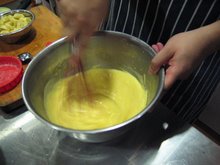

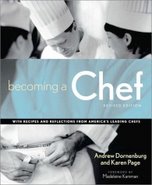
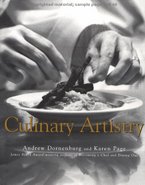


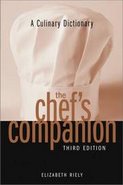


.jpg)
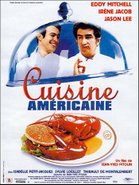









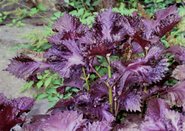

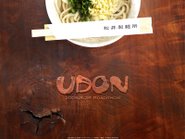





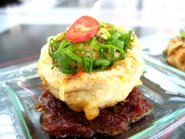


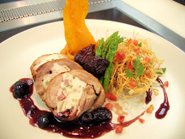
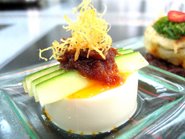
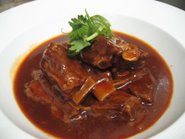
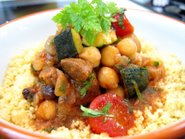
























































No comments:
Post a Comment